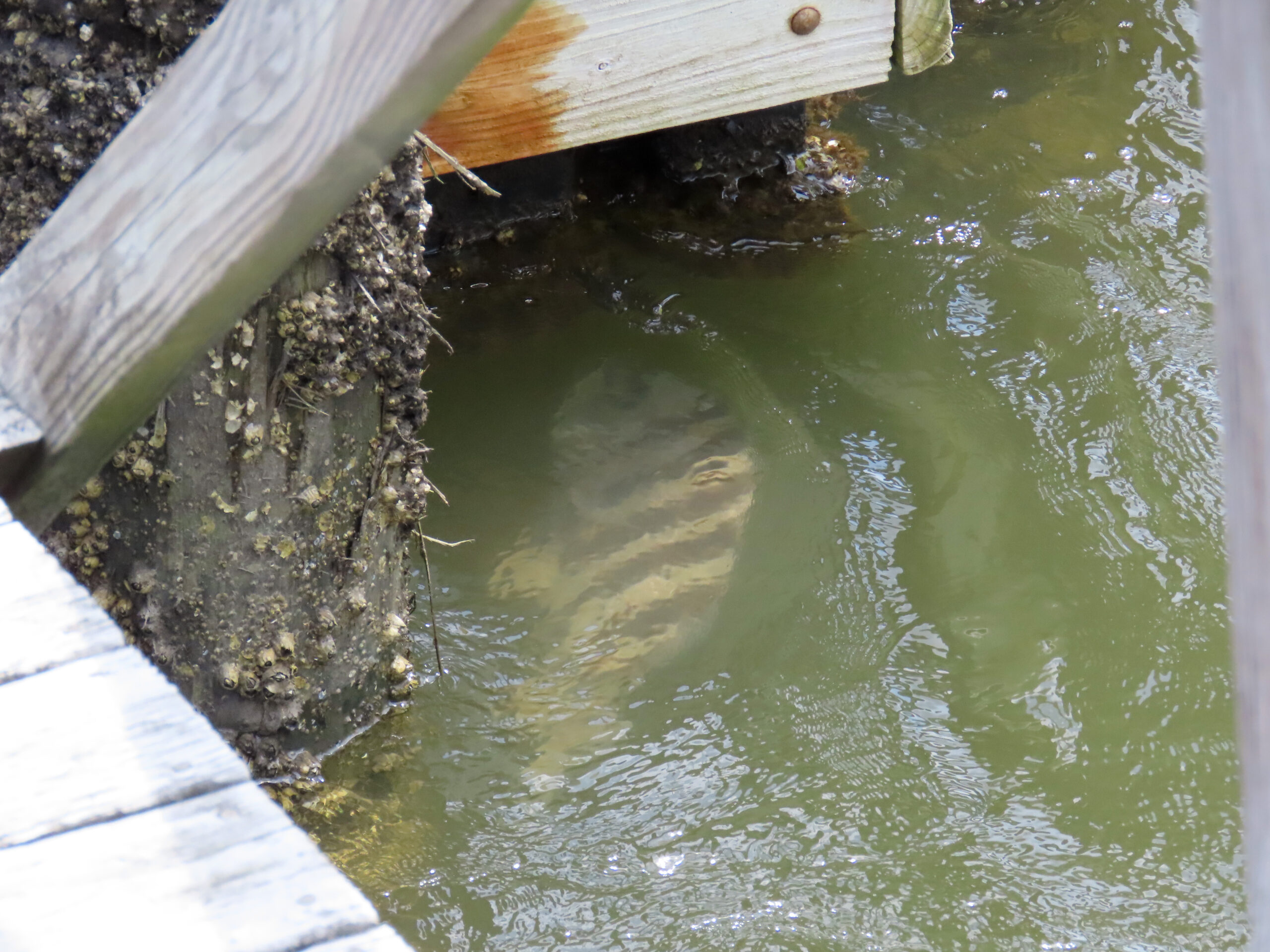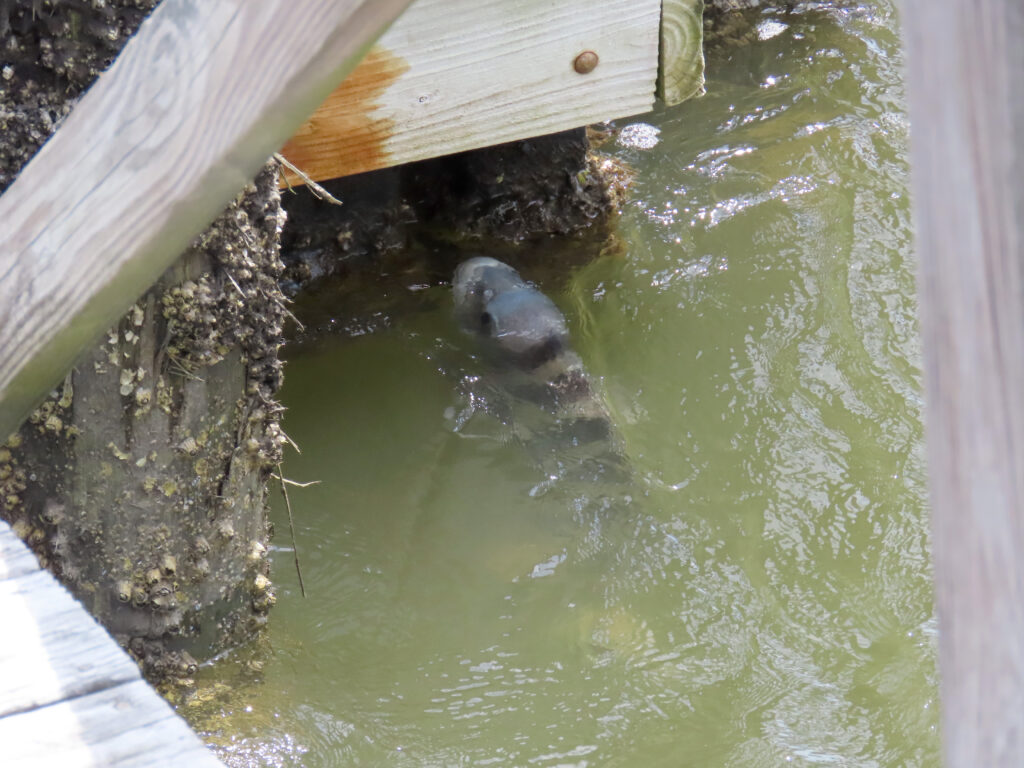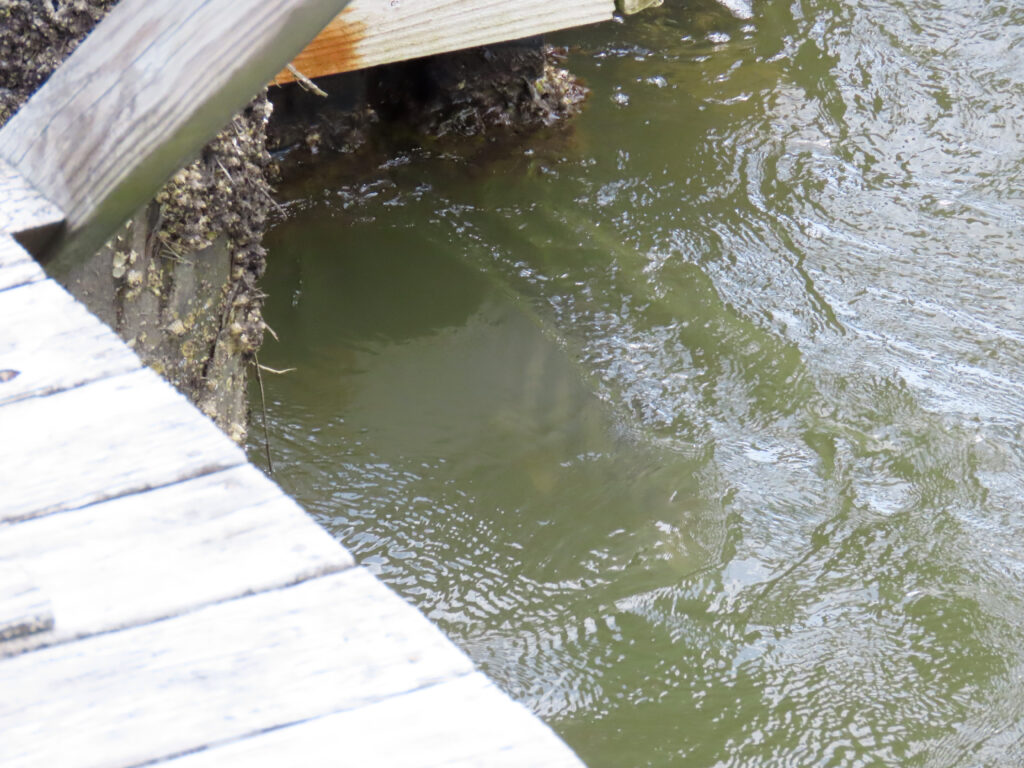


This week for Flora and Fauna Friday we have a briny bicolor barnacle biter, the Sheepshead (Archosargus probatocephalus).
Sheepshead are a marine species of fish found along the East Coast of the United States. They live in habitats along the coast from the brackish marshes of our estuaries, to the briny back rivers of barrier islands, and down into offshore reefs and forgotten shipwrecks. Sheepshead are an easy fish to identify. Their body is marked with alternating heavy, vertical bands of white and black. They have a high-sloped forehead and grow to about the size and shape of a turkey platter, being twice as long as they are tall. Sheepshead average between a foot to foot-and-a-half in length at maturity, but old fish can readily reach double that size. Legally harvestable fish generally tip the scales at between three to fifteen pounds. If you’ve ever hooked one, you also know they have quite a set of pearly whites! Sheepshead have very human-like incisors, but behind that toothy grin is a mouthful of multiple rows of flat, grinding molars. Those teeth are the key to its success in a unique ecological niche here in the Lowcountry tidewaters.
Sheepshead make their living eating on stationary shellfish, mainly barnacles, oysters, mussels, clams, crabs, and just about any other crustacean they can sink their buck teeth into. As such, they are commonly found hanging around docks, marinas, piers, wharfs, reefs, wrecks, jetties, and any other hard structures encrusted in barnacles and oysters. To get their victuals they simply pluck barnacles from pilings, much the same way you’d bite corn off the cob. It’s a simple but effective strategy, especially now that man has filled the Lowcountry waterways with all manner of rip rap and timber for shellfish to stick to.
Conversely though, this habit makes Sheepshead a convenient target for recreational fishing as they hang out year-round right under the dock. Anglers with a South Carolina saltwater fishing license can harvest adult Sheepshead with a total length of at least fourteen inches (as of my writing this in 2025). Sheepshead can take some skill to properly hook, and a little more skill to properly fillet, but, if properly prepared, they’re an undoubtedly tasty fish once they make it to the table.